Hunting Guide Hill Country





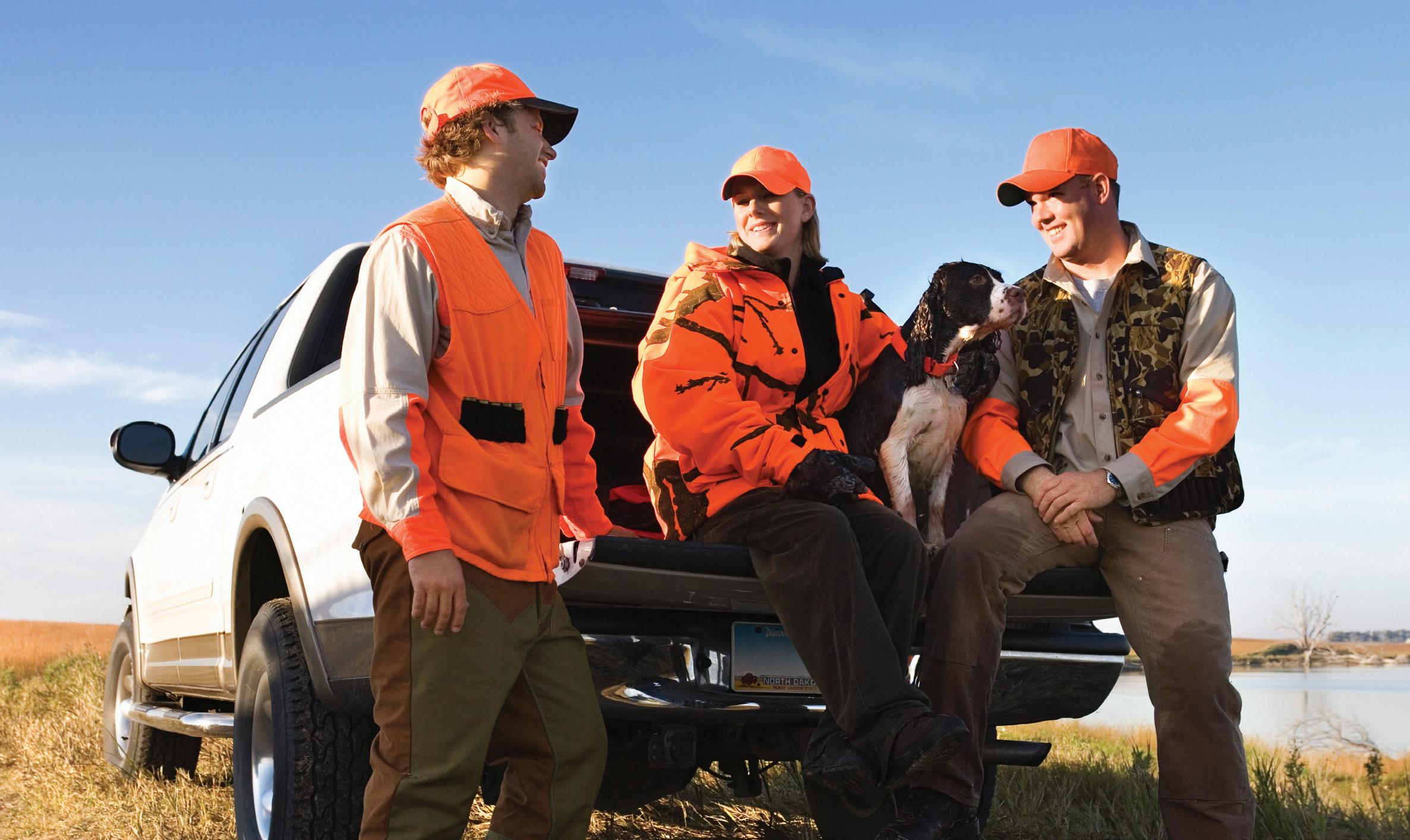
When you have a medical emergency that can’t wait, Methodist Hospital | Hill Country is ready. Our hospital’s emergency room is staffed by a team of experienced and trained medical professionals who are available when you need care the most.
Our emergency room is open 24/7 and is equipped to handle a variety of medical emergencies. When the unexpected happens, you can count on Methodist Hospital | Hill Country to be here for you.
1020 S State Hwy 16 Fredericksburg, TX 78624 SAHealth.com








Jethro Findley, 9, of Fredericksburg, shot his first buck. Findley, who was on the hunt with his brother, Shepherd Findley, harvest-ed the eight-pointer Dec. 30, 2023, at their Opie Welgehausen’s ranch in Llano County. His parents are Paige and Lisa Findley. — Submitted photo
Deer photo information needed for publication
Complete and include the following information:
1. Name of the hunter and the city in which they live.
2. If the hunter is a youth, include his/her age, parents’ names and their cities of residence, if this was the hunter’s first buck and who was accompanying the youth while hunting.
3. Daytime contact phone number.
4. Specific location the deer was harvested (i.e. property or ranch name and general location in the county).
5. Time and date of the kill.
6. Number of points on the buck. (Newspaper staff will not be responsible for counting points, so that number must be provided before publication will take place.)
7. Measurements of the antlers, including width and height.
8. Field-dressed weight of the deer, if available.
All photos from the 2025-2026 season will be published no later than the Feb. 6, 2026 issue of the newspaper.
Photo submission guidelines for the 2025-2026 hunting season have been outlined by the Fredericksburg Standard-Radio Post.
To qualify for free publication, photos must meet the following criteria:
• All animals pictured must be legally harvested following all Texas regulations;
• Either the animal or the hunter must be from Gillespie County;
• Only the hunter who shot the deer may appear in the photo with the animal — no exceptions;
• Each hunter may submit no more than one photo per season — no exceptions;
• The animal’s entire carcass must be present and attached to the head. (No caped out or head-only/ antler-only photos will be accepted.);
• Pictures of does or spikes will not be accepted; Staff photographer, if available, will take photos of those stopping in at the newspaper office, 712 W. Main St. during regular business hours — Monday through Friday from 8 a.m. to 5 p.m.
The images are in digital format and reprints will be made available for purchase through the newspaper’s online site, found at: www.fredericksburgstandard.smugmug.com.
Submit a photo
Hunters may submit color photographs by emailing original, unedited images as separate .jpg attachments to: fbgnews@fredericksburgstandard. com.
Digital submissions should be 300 pixels per inch or higher in resolution. Pictures of low resolution or otherwise poor quality in regard to lighting, framing and sharpness, will not be accepted.
Photos printed on home printers and taken with older cell phones are generally not acceptable.




By Christine Granados Standard-Radio Post Managing Editor
Timely rainfall benefited Texas wildlife and set the stage for a positive fall hunting season outlook.
“Many times, it’s not even how much rain an area receives, but when they receive it,” said Dr. Jacob Dykes, an AgriLife Extension wildlife specialist. “Late winter and spring rains greatly facilitate the growth of vegetation that provides both nutrition and habitat cover needed for a wide range of species.”
With a statewide population of roughly five million, Texas is home to more white-tailed deer than any other U.S. state.
“Gestation and lactation are especially stressful times for does, but thankfully, we have groceries on the ground in the form of vegetation to fulfill those nutritional requirements,” Dykes said. “Many bucks will experience an increase in body mass as well as antler size.”
While annual quail populations naturally fluc-
tuate, Texas has seen a steady decline in both bobwhite and scaled quail over the past three decades and loss of quality habitat is a leading component, according to Dykes.
Although current bobwhite and scaled quail populations are lower than biologists would like to see, Texas Parks and Wildlife Department (TPWD) surveys indicate both populations are stronger than they have been since 2018.
“There are a lot of different reasons why we are having a tough situation with sustaining abundant quail and turkey populations, especially in the southeast portion of the state,” said Dykes, who is based out of Corpus Christi. “Much of it comes down to land-use practices and management activities — many areas just don’t have adequate brooding cover to support the birds once they are hatched.”
TPWD reported increased turkey nesting success and recruitment in 2023 due to abundant acorn production and warm, late winter conditions across much of the Rio Grande wild turkey range.
Dykes said the young turkeys, known as jakes, from the 2023 hatch should provide ample spring season hunting opportunities, although hunters may want to wait until the birds are a bit older.
“Two years and older are what most turkey hunters are after because they have the beard length and spurs that hunters appreciate,” Dykes said.
The season kicked off Sept. 1 for dove hunters, and based on the latest TPWD Dove Population Status, 2025 looks to be a productive year.
Biologists estimated the state supports 35.9 million mourning doves — a 5% increase from 2024 and 28% above the long-term average.
The estimates for mourning doves in the Central Mixed Grass Prairie in the Rolling Plains and the Tamaulipan Brushlands Bird Conservation Regions in the southern part of Texas also saw record highs.
This year, white-winged doves number around 11.7 million — an 8% decrease from 2024, but still 15% above the long-term population average.
The 2023 dove season was a good one, based on the latest TPWD dove surveys, the 2024 season shows great promise.
“Whenever we have sufficient spring and early summer rains, we tend to see really good recruitment, leading to population growth across most species,” said Dr. Marcus Blum, AgriLife Extension wildlife specialist.
Texas Parks and Wildlife biologists estimate statewide populations of roughly 34 million mourning doves and a record-high 13 million white-wing doves.
Owen Fitzsimmons, TPWD webless migratory game bird program leader, said abundant precipitation across much of the state contributed to these positive numbers.
“Conditions have been great overall, with the exception of some very dry areas in the Hill Country and Trans-Pecos, but some July rain may have helped there,” Fitzsimmons said. “I think we’re in for a good-to-excellent dove season in most areas.”
Before taking to the field, hunters should familiarize themselves with the latest hunting rules and regulations.
This spring, the Texas Parks and Wildlife Commission approved more than a dozen modifications and clarifications to the 2024 and 2025 Statewide Hunting and Migratory Game Bird Regulations. Among these changes are expanded days for white-tailed doe harvest in 43 counties in the Post Oak Savannah and Pineywoods ecoregions and reduced turkey bag limits or total turkey season closure within other counties.
“Wildlife are an important resource that contributes to the ecology, culture and economy of the state,” Dykes said. “It is critically important that we do our part to conserve and manage these diverse species with science-based data so we can continue to appreciate them for years to come.”

Sept. 1-Oct. 25
Doves: Daily limit – 15 aggregate to include no more than two white-tipped; Possession limit – three times daily.
Sept. 1-Aug. 31
Squirrel: no limits.
Oct. 1, 2025-Feb. 22, 2026
Javelina: Daily limit – two per year; Possession limit – two.
Nov. 1, 2025-Jan. 4, 2026
White tail deer: Bag limit – five deer, no more than two bucks all season.
Nov. 1, 2025-Jan. 4, 2026
Wild turkey: Bag limit – four turkeys either sex. (Archery season Sept. 27-Oct. 31; Youth only Oct. 24-26)
Nov. 1, 2025-Feb. 1, 2026
Geese, dark/light: Daily limit –five dark, five light; Possession limit: three times daily.
Nov. 1, 2025-Feb. 28, 2026
Quail: Daily Limit – 15; Possession limit: 45.
Nov. 14-30
Falconry: Daily limit – three in aggregate; Possession limit –three times daily.
Nov. 8-30
Ducks: Daily limit with gun –six in aggregate; Possession limit – three times daily.

Texas experienced an increase in hunting accidents last year, with 18 non-fatal hunting accidents and one fatality reported in the 2024 Texas Hunting Accident Report.
“Safe hunting in Texas starts with you,” said Matthew Smith, Hunter Education Coordinator for the Texas Parks and Wildlife Department (TPWD).
“Hunting accidents are preventable by following basic safety rules we call the ‘10 Commandments of Shooting Safey,’ especially the primary rule — pointing the firearm’s muzzle in a safe direction at all times.”
In Bell County, a hunter fired at a low-flying, wounded dove outside of his safe zone and “peppered” his hunting companion with shot pellets. A dozen pellets struck the victim from head to legs. This accident could have been prevented if the hunter stuck to a “safe zone of fire” and communicated his position with others.
While scouting for ducks in Bowie County, a hunter hung a loaded shotgun in a tree while checking for leaks in his waders. The trigger caught and dis-
charged, sending pellets into his upper thigh. This accident could have been avoided by adhering to the basic hunter safety course rules for handling firearms. It’s important to remember to always unload firearms when not hunting and never leave it unattended.
Below are some tips to help ensure a safe experience for hunters whether they’re at home, in transit to their hunting spot or spending time in the field.
Mind Your Muzzle: Whether in transit or in the field, the muzzle should always be pointing in a safe direction. This is the most important safety rule. Clear the Chamber: Unload all firearms when not in use, especially at home, during transport and in the field. Guns should be unloaded as soon as the hunter is finished hunting to avoid accidental discharge.
On Guard: A hunter should keep his or her fingers outside of the trigger guard until ready to take a shot.
Gear Up: Waterfowl hunters should wear protective clothing, waders and approved life jackets while in boats or around water, especially in winter months. Drowning ranks as the number one cause of waterfowl hunting-related fatalities.
Safe Space: For dove, quail and pheasant hunters, the number one cause for accidents or fatalities is shooting at game outside a safe zone of fire. Hunters should communicate and stick to their safe zone of fire and never shoot toward another hunter, buildings or structures, or domestic animals such as cattle. For more information on safe zones of fire, visit the TPWD Hunter Education webpage.
Bull’s-eye and Beyond: Hunters should be sure of their target, including what is in front and behind. No one can take a shot back, so don’t shoot until certain of what could be struck.
Blazing Style: Wearing blaze orange while in the field allows the hunter to be seen by other hunters and reduces the potential for hunting accidents.
Texas’ highest record to date occurred in 1968 when the state saw 37 fatal hunting-related accidents. The numbers recorded every year showed the need for more firearm safety, which led to the creation of the Hunter Education program.
Education
Since Hunter Education became a requirement for all hunters in 1988, Texas’ hunting accident rate has steadily decreased. Only a single fatality has been reported for each of the last six years.
More than 1.6 million students have been certified with Hunter Education since 1972. Hunter Education is required for every hunter in Texas (including out-of-state hunters) born on or after Sept. 2, 1971. The minimum age for certification is nine years old and certification is good for life.
There are two in-person course options for anyone under 17 years of age — a six-hour classroom course or a four-hour field course preceded by a home study Internet course. Additionally, those 17 and over can alternatively take and pass an approved online-only course.
Courses can be found by visiting the Hunter Education page. Classes are also offered at schools, clubs and venues throughout Texas communities.
Hunters must show proof of Hunter Education certification on their person while in the field. Hunters have access to their Texas proof of Hunter Education in the free Outdoor Annual mobile app for iOS and Android.



1. Which field carry provides the most control of your firearm:
a. Sling
b. Trail
c. Two-Handed
d. Cradle
2. A common cause of a hunting accident is:
a. Victim covered by shooter swinging on game
b. Use of alcohol or drugs
c. Horseplay with loaded firearm
d. All of the above
3. Which of the following is NOT a safe way to transport a firearm:
a. With the action open
b. Unloaded
c. In a gun case
d. Loaded and in a gun rack, visible through the windows
4. When crossing a fence with a firearm:
a. Open the action
b. Unload the firearm
c. Rest the muzzle on a hat
d. All of the above
5. To minimize the risk of a firearm incident in the home, you should never:
a. Point the muzzle in a safe direction
b. Check that the magazine and chamber are empty
c. Store the firearm and ammunition together
d. Keep your finger off the trigger when handling a firearm
6. A hunter’s “zone-of-fire” is the area in which a hunter can safely shoot.
a. True
b. False
7. Causing an accident by mistaking another person for a game animal is an example of a:
a. Safety rule violation
b. Hunter judgement mistake
c. Lack of control and practice
d. Mechanical failure
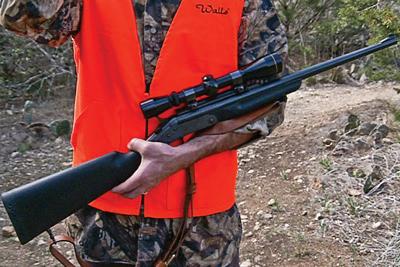
The cradle carry rests the gun across your forearm and elbow. The hand easily secures the firearm by grasping the stock. — Photo and Information copyright Texas Parks and Wildlife Department

A sling carry uses a rifle sling placed over your shoulder to support the rifle. — Photo and Information copyright Texas Parks and Wildlife Department


The trail carry uses one arm to carry the firearm, leaving the other free for balance. — Photo and Information copyright Texas Parks and Wildlife Department
When walking in a single file line, the hunter in front keeps his muzzle to the side or up. The hunter in the middle keeps the muzzle to the side with cradle carry. The hunter in the rear keeps his muzzle back or to the side. — Photo and Information copyright Texas Parks and Wildlife Department
8. When three hunters are walking in a single file with shotguns or rifles, it is acceptable for the hunter in the center to use the:
a. Concealed carry
b. Shoulder carry
c. Trail carry
d. Cradle carry to the side
9. When hunting in a tree stand you should always:
a. Use an approved fall arrest system when climbing in or out of the stand
b. Use a haul line to bring a firearm or bow up or down from the stand
c. Use an approved fall arrest system when hunting from the stand
d. All of the above
10. To safely load or unload a firearm you should always point the muzzle in a safe direction and put the safety on if not already on:
a. True
b. False


An example of a Treestand Manufactures Association approved Fall Arrest System, which consists of a full body harness, a tether, and a tree belt. — Photo and Information copyright Texas Parks and Wildlife Department






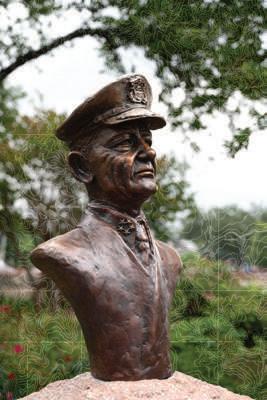




The times given below are the general times of sunrise and sunset for Gillespie County, Texas, for the general hunting season (in the northern zone) — Nov. 1, 2025, through Jan. 4, 2026. Texas is in the Central Standard Time Zone.

“Cloudy mornings are usually more likely from December into January with fog or mist possible in the morning hours. Always check conditions before heading out into the great outdoors.”
Cary Burgess Standard-Radio Post Meteorologist




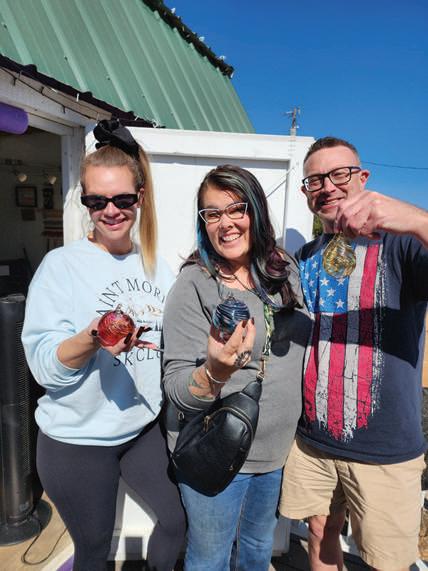







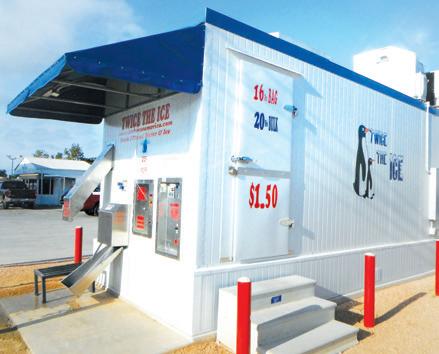

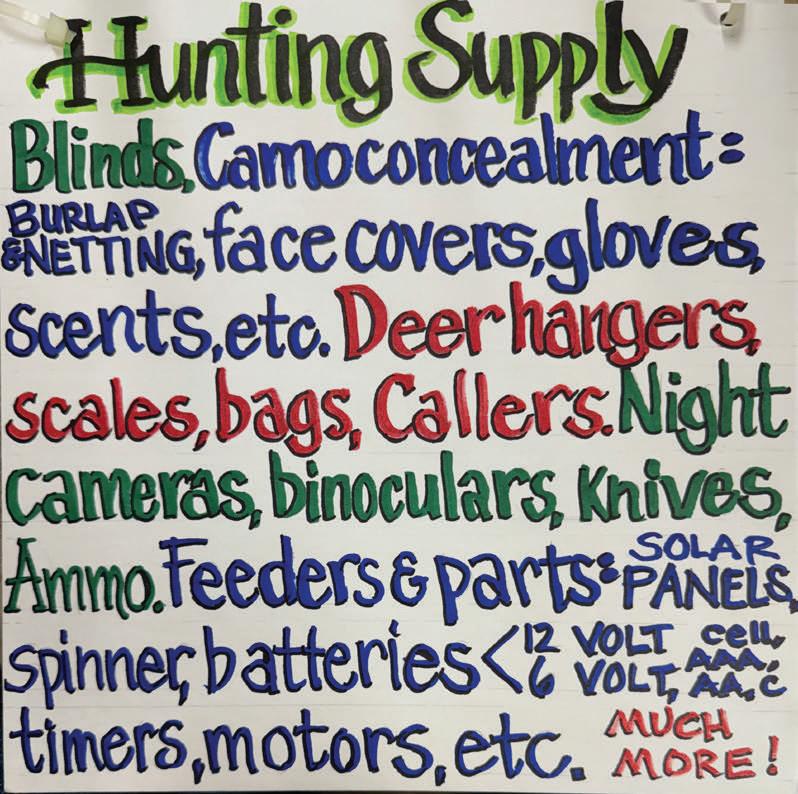
By Michaela Rush Standard-Radio Post reporter
While many enjoy the company of canine companions, for Joshua Creek Ranch hunting guide and dog trainer Joseph Zinsmeyer, they’re a necessity.
Zinsmeyer has made a career of raising, training and hunting alongside Upland breed dogs. This is a family of breeds that specialize in hunting non-waterfowl birds.
“We have tons and tons of birds out here, but you’ll very rarely walk in the field and pick up a bird without a dog,” Zinsmeyer said.
Fredericksburg’s Plum Creek Kennels, owned by Art and Mary Heitzler, specializes in the French Brittany breed.
“We got our first Brittany in the early ’90s from Bill and Kathy Dillon,” Mary said. “I’ve raised by children and grandchildren with French Brittanys and they’ve been awesome. They’re the type of dog that wants to cuddle and be right next to you. They’re very lovable and affectionate.”
But the breed is also well known for its bird tracking and hunting ability. Trainer John Pron said it’s amazing how the dogs’ instincts take over in the field.
“A good bird dog is like what you want to be as a person – showing up every day, working hard, never late and they have fun working hard,” Pron said.
Over in Boerne, Joshua Creek Ranch runs a large

dog breeding and training operation, averaging 100 dogs on the property. Their speciality is Cocker Spaniels and Setters.
Both Plum and Joshua Creek operations breed dogs once a year, as the hunting season winds down in February and March.
“We have to have new dogs coming in all the time, because we’re constantly cycling through them for training once hunting season gets underway,” Zinsmeyer said.
Before breeding begins, trainers work together to find the right balance of genetics, hunting instinct and general behavior.
“You want a dog that’s going to run in the field, exceptionally, that becomes an addict for finding
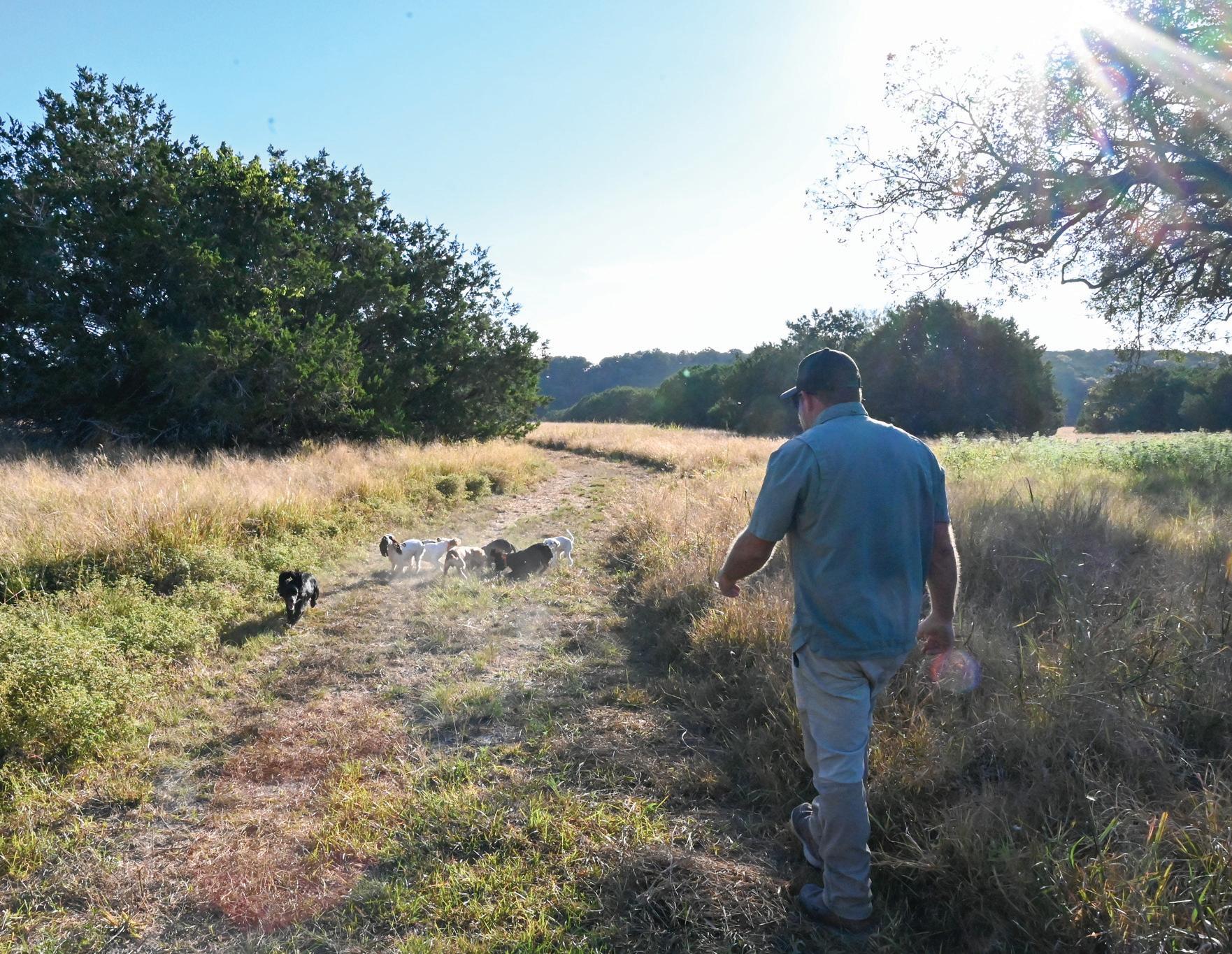
these birds,” Pron said. “They’re beautiful out in the field, but then you can bring them home and they’re not going to destroy your house, they’re good dogs who sit on the couch with you.”
At Plum Creek, the team works with breeders in France to bring over male sires each year. The team keeps reminders of common dog commands in French on their exchange’s kennels.
“Gestation is two months, so usually we’ll put two dogs together and around a month you can see the (female) dogs’ rib cage extend out,” Pron said. “About a week before they’re due we move them inside.”
The summer is a pause in training for both operations, as they focus on early care of new puppies and keeping older dogs safe.
“During summertime, we do very little training because it’s so hot and the snakes are out,” Zinsmeyer said. “We try to make it easy on the dogs.”
The training process at both kennels starts similarly, with simple walks in the field with young pups.
“We’ll start taking them out on little walks, just to get used to the field and smelling everything,” Pron said. “That’s an important part of their life, around three months when they’re vaccinated and good to go out and run around.”
This starts the process of teaching the dogs to come when called, either by name or general command.
“We say that every dog’s name is ‘here,’ ” Zinsmeyer said.
What comes next is introducing the dogs to birds, whether they be training tools like pigeons, or their targets like quail and pheasant.
“Every dog is different, you just pick and pull from each dog,” Pron said. “It’s a student, so you have to see what your student is learning from, what he’s not learning from, and adjust from there.”
Once dogs have stronger recall and are more used to being in the field, Zinsmeyer will hide live quail in the field for the dogs to locate.
The dogs work on not only tracking scents, but learning the restraint to stop and point, a stance that shows hunters where the prey is hiding.
Heitzler said it’s important dogs receive regular obidience training with hunting eduction and are acclimating to home life.
“As dog owners, you have to be consistent,” Heitzler said. “It’s like with kids, if you have naughty kids, people aren’t going to want you to bring them along. It’s the same thing with a dog, they have to have manners.”
Pron said the training process takes at least one year.
“Training is a long process, and it’s not something where you can just say, okay we’re going to go hunt wild birds, and expect your dog to run well,” Pron said.
Zinsmeyer said it takes about two hunting seasons for dogs to fully understand their role in the field. Although training is hard work, Zinsmeyer said it’s incredibly rewarding.
“If you don’t leave with a smile on your face after you walk with these dogs, something’s wrong,” Zinsmeyer said.
While Joshua Creek Ranch is able to train dogs on site, thanks to their high bird populations and large acreage, Plum Creek takes their dogs on roadtrips to hunting destinations across the United States.
Pron said Heitzler leads the hunting trips, bringing around eight dogs with him across Montana, the Dakotas, Arizona and New Mexico.
“It’s a lot to travel with that many dogs, but it makes it worth it when you see a first-year dog get their first bird, push it out, chasing and running, that makes it all worth it,” Pron said.
Heitzler said individuals should consider the amount of time they can invest into their animal.
“What is challenging is that it’s seven days a week,” said Heitzler. “Like with any animal, it’s a big commitment.”
Though the operations differ in their training and breeding approaches, Pron and Zinsmeyer agreed that working with the dogs —and their humans — is immensely rewarding.
“Dogs have a better understanding of the world than we know,” Pron said. “They’re so in tune with us, and they’re way better than we can ever imagine.”
After eight or nine years, hunting dogs are usually retired from the field. Before dogs reach this age, the operations work to find individuals and families to adopt them.
“We work with Field to Family Dogs and they’re great, they help us find homes,” Zinsmeyer said. “The dogs, they hunt so hard their whole life, they really deserve a good retirement.”



































The annual Wild Game Dinner (WGD) returns on Nov. 22 to the Gillespie County Fair Grounds for its 19th year. The fundraiser supports youth agriculture education programs through grants.
The event will start at 5:30 and end at 10 p.m. Staff will serve food until it is gone.
Attendees can sample dishes like tamales, stew and tacos made with wild game ranging from axis and white-tailed deer to alligator and mountain sheep. Local 4H and FFA members will serve the food.
Since 2007, the event has raised $2.1 million for agriculture education, including livestock projects, leadership experiences in Washington D.C. and funding for Fredericksburg High School’s Ag Barn.
“The Wild Game Dinner is a fun, family-friendly event featuring games, auctions, and prize drawings, all to support programs that build youth leadership and agricultural education in and around Gillespie County,” said Lester Meier, a WGD board member. “There truly is something for everyone.”
Those interested can purchase tickets at Arrowhead Bank, Stroeher & Olfers, Lochte Feed, Allied Ag Services, Behrend’s Feed in Harper or online at buy. ticketstothecity.com/purchase.php?date_id=67438 for $25, which includes food and drinks.
There will also be non-wild game barbecue plates available.
The fundraiser will sell raffle tickets and host a live auction complete with prizes ranging from jewelery to firearms. There will be games to win additional prizes at the fair grounds.
For more information, visit the Gillespie County Wild Game Dinner Facebook page, email GCWildGameDinner@gmail.com, or contact Shawn Lehne at 512-567-4682 or Charlie Wilson at 210-288-8434.





Joshua Creek Ranch
Texas Hill Country


“The finest upland hunting with experienced guides, dogs, and incredible food and lodging. Also, the driven pheasant experience is superb, I attend all of the high volume shoots -- the number of birds and the setting in which they’re driven is unsurpassed.”
K. Worfe | Facebook Review